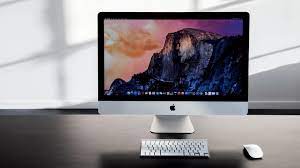In the ever-evolving landscape of personal computing, Apple has consistently been at the forefront of innovation, setting new standards with each iteration of its products. The MacBook lineup, renowned for its sleek design, powerful performance, and user-friendly interface, took a significant leap in 2010. This essay aims to explore and review the MacBook series from the year 2010, highlighting the advancements, design changes, and the overall user experience.
Design Evolution
The MacBook from 2010 marked a departure from its predecessors with a unibody construction, a design philosophy that not only enhanced durability but also contributed to a more polished aesthetic. The aluminum unibody enclosure not only provided structural integrity but also significantly reduced the overall weight of the laptop, making it more portable than ever before.
The introduction of the chiclet-style keyboard was another design choice that garnered praise. The keys were well-spaced, offering a comfortable and responsive typing experience. The backlit keyboard was a welcome addition, catering to users who often found themselves working in low-light conditions. The spacious multi-touch trackpad was another standout feature, supporting a wide range of gestures that simplified navigation and enhanced the overall user experience.
Display and Graphics
The MacBook from 2010 featured a display that was not only visually stunning but also technologically advanced for its time. The 13-inch model boasted a resolution of 1280 x 800 pixels, providing crisp and vibrant visuals. The LED-backlit display contributed to improved energy efficiency, ensuring a balance between performance and battery life.
In terms of graphics, the MacBook was equipped with NVIDIA GeForce 320M graphics, a significant upgrade from its predecessors. This enhancement translated to smoother graphics performance, making the laptop capable of handling more demanding tasks such as graphic design, video editing, and light gaming.
Performance and Hardware
Under the hood, the MacBook from 2010 was powered by Intel Core 2 Duo processors, offering a substantial boost in performance compared to earlier models. The inclusion of DDR3 RAM further contributed to faster data access and improved multitasking capabilities. While the hardware specifications may not match the standards of contemporary laptops, the MacBook from 2010 excelled in handling everyday tasks with ease.
The introduction of the Thunderbolt port was a groundbreaking feature, providing users with high-speed data transfer and the ability to connect to a variety of peripherals. This forward-looking approach to connectivity ensured that the MacBook remained relevant for years to come.
Battery Life and Portability
One of the standout features of the MacBook from 2010 was its impressive battery life. The integration of a non-removable lithium-polymer battery ensured a longer lifespan and reduced the need for frequent replacements. Users could enjoy extended usage periods without being tethered to a power source, making the MacBook an ideal companion for on-the-go professionals and students.
The slim and lightweight design of the MacBook further contributed to its portability. Weighing in at just under 4.5 pounds, the laptop was easy to carry, making it a popular choice for individuals who valued both performance and mobility.
Operating System: macOS
The MacBook from 2010 ran on macOS, Apple’s proprietary operating system known for its stability, security, and user-friendly interface. The inclusion of macOS Snow Leopard at the time was a significant upgrade, introducing features that enhanced system performance and streamlined the user experience.
The App Store, introduced with macOS Snow Leopard, provided a centralized platform for users to discover and download a wide range of applications. This shift towards a more integrated ecosystem further solidified Apple’s commitment to creating a seamless and user-friendly computing environment.
Legacy and Longevity
What truly sets the MacBook from 2010 apart is its longevity. Despite being over a decade old, many users still find these laptops functional and capable of handling everyday tasks. This resilience is a testament to Apple’s commitment to creating products with enduring value.
The MacBook from 2010 also benefitted from a strong and supportive community. The availability of software updates and a dedicated user base ensured that even as technology advanced, users could find solutions and workarounds to keep their laptops relevant.
Advancements in Storage Technology
The MacBook from 2010 marked a shift towards solid-state drives (SSDs), departing from traditional hard disk drives (HDDs). This change significantly improved overall system responsiveness, reduced boot times, and enhanced the laptop’s durability by eliminating moving parts susceptible to mechanical failure. The adoption of SSDs reflected Apple’s commitment to staying at the forefront of storage technology trends, setting a precedent for the industry’s future direction.
Connectivity and Wireless Capabilities
The MacBook from 2010 introduced improved wireless connectivity with the integration of 802.11n Wi-Fi technology. This allowed for faster data transfer speeds and more reliable wireless connections, catering to users who increasingly relied on Wi-Fi for internet access and data transfer. Additionally, Bluetooth 2.1 + EDR support facilitated seamless connections with peripherals such as wireless mice, keyboards, and headphones, enhancing the overall user experience.
Environmental Considerations
Apple’s commitment to environmental sustainability was evident in the MacBook from 2010. The laptop met stringent Energy Star 5.0 and EPEAT Gold standards, emphasizing energy efficiency and recyclability. The transition to LED-backlit displays not only contributed to a better viewing experience but also reduced power consumption. Apple’s dedication to environmentally conscious design practices set a benchmark for the industry and underscored the company’s responsibility towards minimizing its ecological footprint.
User-Friendly Software Features
The MacBook from 2010 introduced several software features that enhanced user convenience and productivity. The inclusion of FaceTime, Apple’s video-calling application, provided users with an intuitive way to connect with friends and family. iLife ’11, a suite of multimedia software that included iPhoto, iMovie, and GarageBand, further enriched the user experience by empowering users to create and edit photos, videos, and music seamlessly. These bundled software applications demonstrated Apple’s commitment to providing users with a comprehensive and integrated ecosystem.
Security Features and Biometrics
Incorporating advanced security features, the MacBook from 2010 included a built-in iSight camera for facial recognition. This not only provided users with a convenient way to log in securely but also laid the groundwork for future biometric authentication methods. While not as sophisticated as the Face ID technology found in later Apple products, the inclusion of facial recognition showcased Apple’s early efforts to prioritize user security and privacy.
Conclusion
In retrospect, the MacBook from 2010 stands as a milestone in the evolution of Apple’s laptop lineup. Its sleek design, impressive performance, and enduring legacy make it a noteworthy chapter in the history of personal computing. While newer models have since surpassed its specifications, the MacBook from 2010 remains a reliable and capable device, showcasing the timeless principles of design and innovation that define the Apple brand. For those who were fortunate enough to experience the MacBook from 2010, it serves as a reminder of a bygone era when laptops were not just tools but symbols of technological craftsmanship and aspiration.
By: Raunak Jha
Write and Win: Participate in Creative writing Contest & International Essay Contest and win fabulous prizes.














